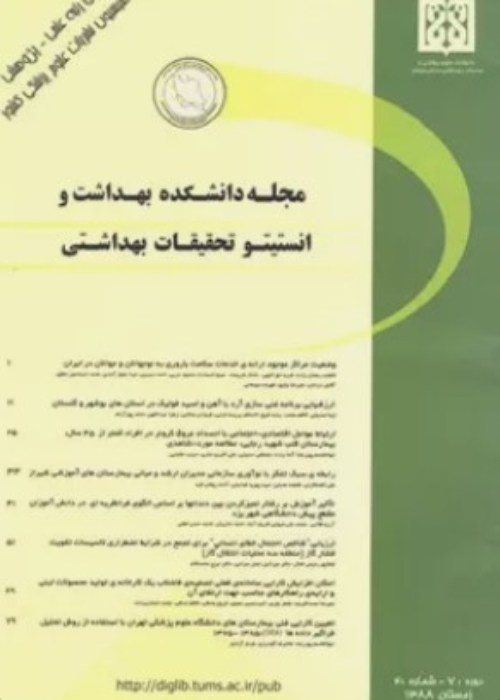Associations Between Food Preferences, Health Literacy and Body Mass Index Among Primary School Students in Malekan County, Iran
Food preferences and health literacy ─ key determinants of food choices in childhood and adolescence ─ are determinants of chronic diseases in adulthood. This study aimed to determine associations between food preferences, health literacy and body mass index (BMI) among elementary school students in Malekan city, west Azarbayejan Province, Iran in 2021-2022.
This cross-sectional descriptive-analytical study included 582 male and female primary-schoolers in the fourth, fifth and sixth grades in both the public and private schools in Malekan County (Malekan, Lilan, and Mubarakshahr) selected by the two-stage randomized cluster method. A questionnaire including background questions and questions about health literacy and a researcher-made checklist of food preferences was used to collect data online using the Pros-Online Platform. The content validity ratio and index were used to determine validity and Cronbach's alpha index to check for the reliability of the questionnaire (CVI=0.98, CVR=0.91, Cronbach's alpha > 0.7). Data were analyzed using Mann-Whitney, t-test, one-way analysis of variance, Kruskal-Wallis and Chi-square tests at a significance level of 0.05 using SPSS 26.
The average health literacy score of all the students was rather low (52.9±00.33), that of the female students (55.7±36.49) being slightly higher than that of the boys (49. 9±29.79). Further analysis of the data showed that there was a statistically significant relationship between the students' food preferences and health literacy variables (p<0.001). Furthermore, statistically significant relationships were observed between the students' BMI and their food preferences (p˂0.001) and health literacy (p˂0.001).
Considering the low level of health literacy of the adolescents and a positive relationship between health literacy, food preferences and BMI in adolescents, it can be concluded that increasing their health literacy will improve their healthy food choices. Therefore, it seems that interventions based on a theoretical framework aiming at increasing the students’ health literacy and improving their food preferences can be beneficial to them as a potential strategy for improving their healthy eating patterns resulting in preventing overweight and obesity.
- حق عضویت دریافتی صرف حمایت از نشریات عضو و نگهداری، تکمیل و توسعه مگیران میشود.
- پرداخت حق اشتراک و دانلود مقالات اجازه بازنشر آن در سایر رسانههای چاپی و دیجیتال را به کاربر نمیدهد.


